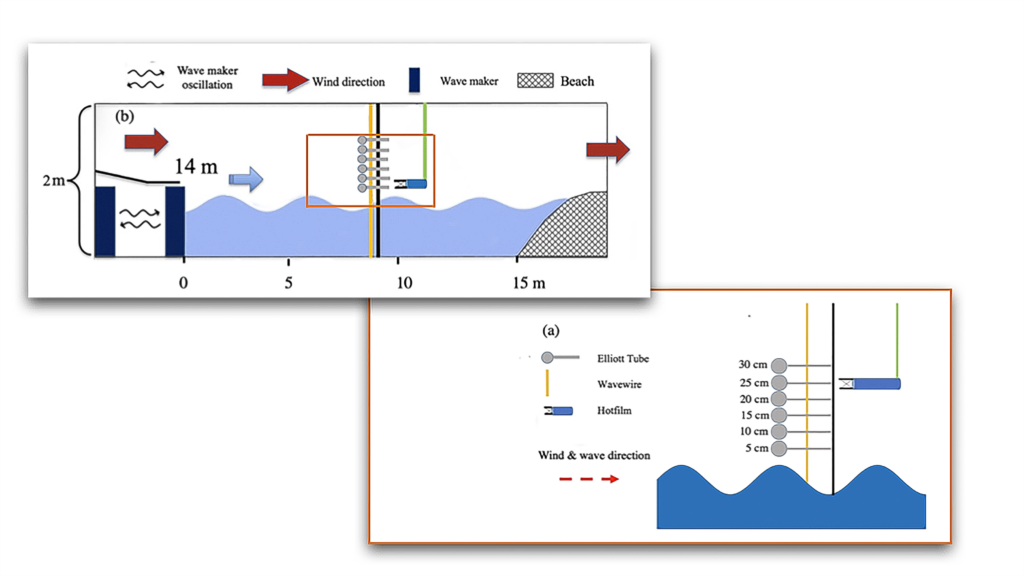By Diana Udel, University of Miami News
Scientists at the University of Miami’s Alfred C. Glassell Jr. SUrge‐STructure‐Atmosphere INteraction (SUSTAIN) laboratory conducted a first-of-its-kind study into how waves form and increase in windy and hurricane conditions. The research, which reconstructs the two-dimensional profile of pressure and airflow above wavy surfaces, provides new insights into understanding ocean wave growth and its broader implications for weather forecasting and coastal resilience.
The research team simultaneously measured air pressure, airflow and water elevation in a controlled environment, capturing up to 1,000 data points per second. By analyzing these data, they studied how different factors — such as wave height, wave frequency and wind force — affect the movement of air and the transfer of momentum between the air and the ocean’s surface. The aim of the study is to understand how waves develop and how winds interact with the ocean in extreme weather conditions.
Building on these high-resolution measurements, the researchers used the advanced capabilities of the SUSTAIN wind-wave tank, which is capable of simulating Category 5 hurricane-force winds, to reconstruct the airflow patterns that drive wave growth in strong winds. By employing Constant Temperature Anemometry to capture rapid airflow changes, Particle Image Velocimetry to track the movement of air and water, and Multi-beam Imaging to map wave structures, they gained deeper insights into the dynamic interactions shaping ocean waves.

“Wind pressure acts like fuel for ocean waves — higher pressure pushes on the front of a wave, making it grow taller and move faster,” said Peisen Tan, the lead author of the study and a recent Ph.D. graduate of the University of Miami Rosenstiel School of Marine, Atmospheric, and Earth Science. “Measuring the pressure over the open ocean is extremely challenging. Our research conducted in SUSTAIN allowed us to document that wind speed alone can be used to estimate this pressure and predict wave growth.”
The researchers found that the traditional models (where the airflow adheres to the water) correctly predict over 90% of momentum transfer in airflow over water until separation occurs. However, when airflow separates on the leeward side of waves (blocked from the wind), these models underestimate momentum transfer by more than 30%.
“This study marks a significant step in understanding air-sea momentum transfer,” said Brian Haus, a professor in the Department of Ocean Sciences at the Rosenstiel School and a co-author of the study. “Our experimental approach reconstructed the two-dimensional profile of pressure and airflow above wavy surfaces—an achievement that, to our knowledge, is a first-of-its-kind breakthrough. These insights can help refine numerical wave models by incorporating airflow separation effects.”
The study, titled “Wind‐Wave Momentum Flux in Steep, Strongly Forced Surface Gravity Wave Conditions,” was published in the American Geophysical Union’s Journal of Geophysical Research: Oceans in January. For more information, visit https://news.miami.edu/rosenstiel/stories/2025/04/innovative-research-provides-further-insights-into-how-ocean-waves-form.html.
Sign up for The Invading Sea newsletter by visiting here. To support The Invading Sea, click here to make a donation. If you are interested in submitting an opinion piece to The Invading Sea, email Editor Nathan Crabbe at ncrabbe@fau.edu. Banner photo: Alfred C. Glassell, Jr. SUrge-STructure-Atmosphere-INteraction Laboratory (SUSTAIN). (Credit: University of Miami Rosenstiel School).



